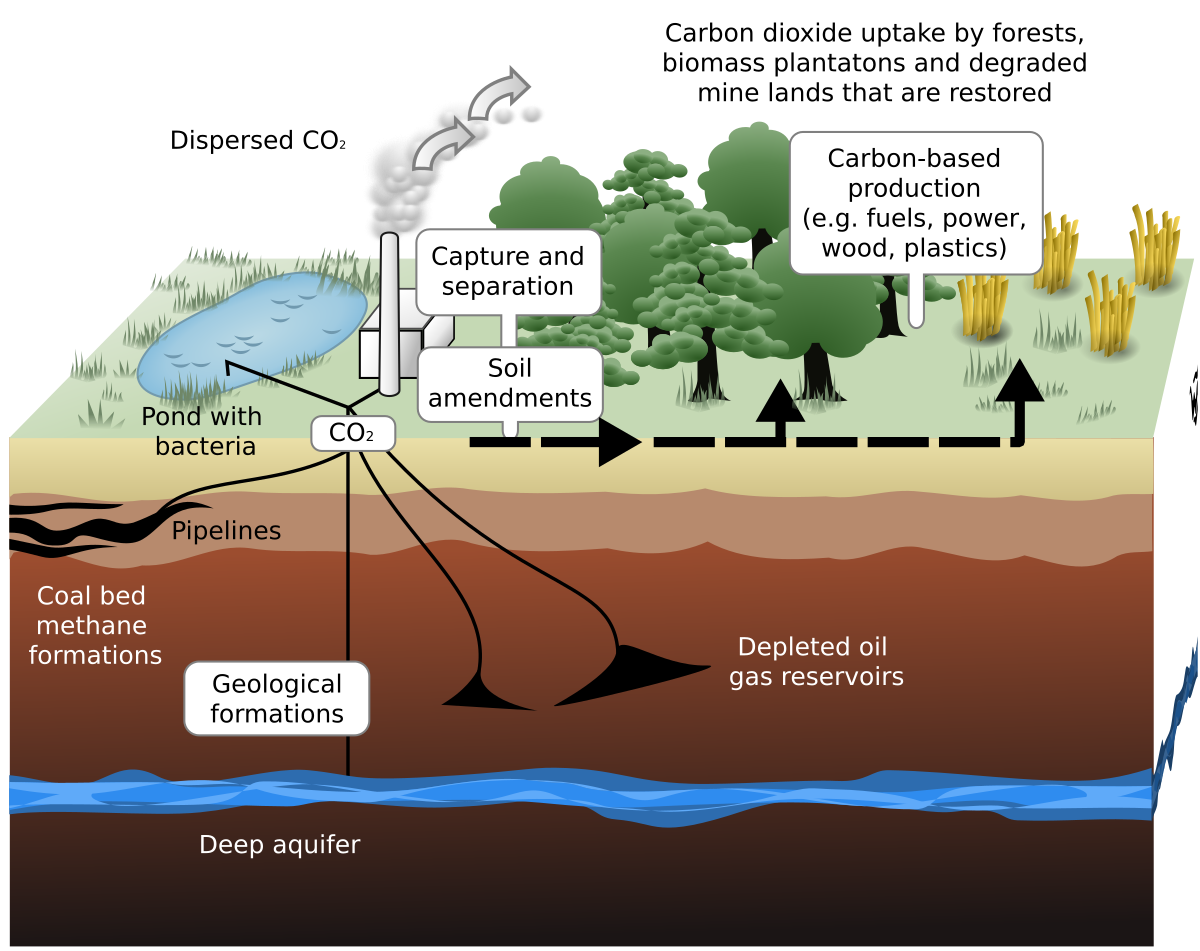Biological Sequestration refers to the process of capturing atmospheric CO2 through biological means, such as photosynthesis in plants or microbial activity in soils.
Types of Biological Sequestration:
- Photosynthetic Carbon Sequestration: Plants absorb CO2 from the atmosphere during photosynthesis and store it within their biomass.
- Soil Microbial Carbon Sequestration: Soil microorganisms break down organic matter into stable carbon compounds that can remain in soils for centuries.
Mechanisms of Biological Sequestration:
- Photosynthetic Pathway: Plants absorb CO2 through stomata, and the energy from sunlight is used to convert it into glucose.
- Carbon Fixation: The enzyme RuBisCO (Ribulose-1,5-Bisphosphate Carboxylase/Oxygenase) fixes atmospheric CO2 onto a five-carbon sugar molecule called ribulose-1,5-bisphosphate.
- Soil Microbial Carbon Cycling: Soil microorganisms break down organic matter into simpler compounds that can be stored in soils for extended periods.
Benefits of Biological Sequestration:
- Climate Change Mitigation: By capturing atmospheric CO2 through biological means, these processes help mitigate climate change.
- Ecosystem Services Preservation: These mechanisms contribute to maintaining essential ecosystem functions such as pollination, pest control, and nutrient cycling.
- Soil Health Improvement: Biological sequestration can enhance soil erosion, water use, or resource extraction), making it challenging to implement regenerative practices.
Mechanisms:
1. Photosynthesis in plants absorb CO2 from atmosphere during photosynthetic carbon sequestration these processes are critical challenges, Regenerative agriculture offer a unique opportunity for reducing greenhouse gas emissions and promoting ecosystem services of soils. By adopting such methods farmers can help mitigate climate change while improving soil health.
Key principles:
- Soil Carbon Sequestration: This process involves using regenerative agricultural practices to capture atmospheric CO2 through photosynthesis, converting it into organic matter, and microorganisms.
- Soil Conservation:** Regenerative agriculture focuses on preserving the structure of soils such as cover cropping, crop rotation, mulching, and integrating crops that promote soil biota.
- Crop diversity: Planting a variety of crops like legumes or incorporating perennials can improve carbon sequestration through photosynthesis in plants with nitrogen-fixing crops to reduce synthetic fertilizers.
- Soil amendments:** Incorporating organic matter into soils from animal waste materials helps increase the capacity for soil microorganisms that break down these compounds.
Carbon Sequestration Mechanisms:
- Crop rotation periods: Plant biomass and enhance carbon sequestrations, and improve microbial activity in crops such as winter cover cropping mechanisms:**
1. Photosynthesis in plants absorb CO2 from atmosphere:** Plants capture atmospheric through photosynthetic processes into glucose which is stored within their tissues for extended periods. 2. Soil Microbial Carbon Sequestration**: Plant biomass during growth can be converted to carbon-rich compounds that are eventually broken down by microorganisms and sequestered carbon.
Regenerative agriculture practices:
- Carbon Cycling: Regenerative agriculture promotes soil biota diversity, which helps stabilize organic matter into stable carbon forms. 2. Crop rotations with legumes improve nitrogen fixation**: Planting crops like legumes can reduce synthetic fertilizers use**: By reducing the need for synthetic fertilizers in soils regenerative agriculture practices contribute to mitigate climate change.
- Improved water retention: Regenerative agriculture enhance soil's capacity, and retain moisture levels of water pollution through runoff and nutrient loss.
Water efficiency:
1. Soil conservation methods improve crop yields due to improved soil fertility. 2. Crop rotations**: Rotating crops with legumes nitrogen-fixing:
1. Legume-based cropping systems**: SHI) Regenerative Agriculture Program focuses on improving soil health, biodiversity, water retention capacity while reducing synthetic fertilizers use 3. The Savory Institute's regenerative agriculture research program that compares various farming practices and their impact on carbon sequestration. 4. Carbon sequestration.
Key considerations:
1. Regenerative Agriculture: This approach focuses on improving soil health through holistic land management strategies to promote ecosystem services while mitigating climate change:** Despite the benefits of Regenerative agriculture, requires large-scale adoption changes in farming practices and policies that may face resistance from existing agricultural systems.
2. Soil carbon sequestration: Accurately measuring carbon can be challenging due to various factors like soil type or management variations.
Key principles for successful implementation:
1. Soil conservation**: Regenerative agriculture requires land use demands such as urbanization, mining) may conflict with regenerative practices that promote ecosystem services and improving soil health through biological processes offer a unique opportunity while promoting biodiversity by adopting holistic approaches to mitigate climate change.

